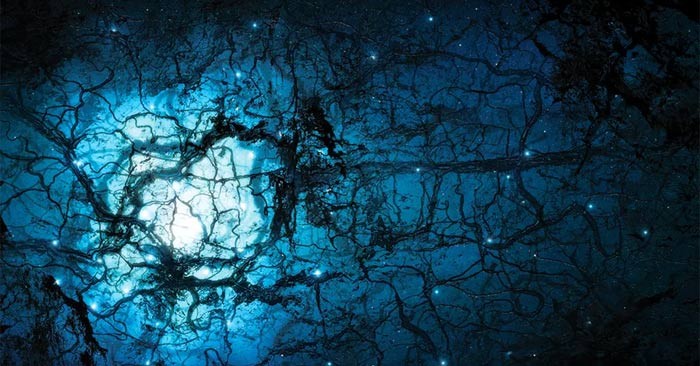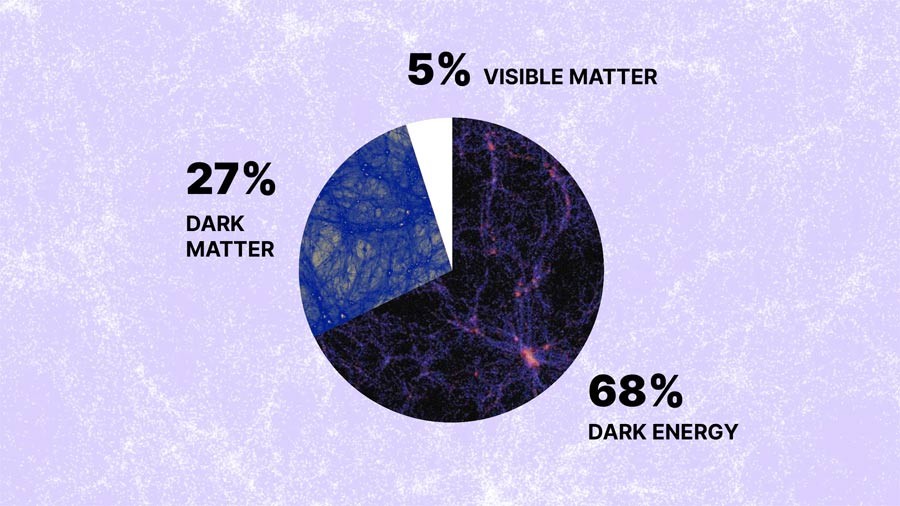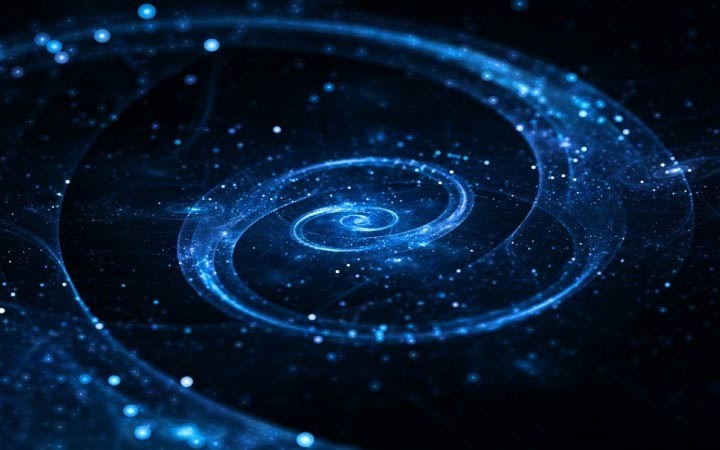Comment récupérer laccès au disque dur, corriger lerreur dimpossibilité douvrir le disque dur

Dans cet article, nous vous expliquerons comment récupérer l'accès à votre disque dur en cas de panne. Suivez-nous !
Dark energy— the dominant form of energy in space—is driving the universe's ever-accelerating expansion, but its nature remains a complete mystery. Here's what you need to know about dark energy .

Dark energy is a hypothetical form of energy proposed by physicists to explain why the universe is not only expanding, but expanding at an ever-increasing rate.
Think of dark energy as the “evil counterpart” to gravity—an “anti-gravity” force that creates negative pressure that fills the universe and stretches the very fabric of space-time. In doing so, dark energy pushes cosmic objects apart at ever-increasing speeds instead of pulling them together like gravity does.
Dark energy is estimated to make up about 68% to 72% of the total energy and matter in the universe—the matter/energy "budget" of the universe—meaning it strongly dominates both dark matter and everyday matter.
The only real answer to the question “what is dark energy?” right now is “we don’t know,” although that may sound unsatisfying. However, scientists aren’t completely in the dark about it. There are a number of leading “contenders” to explain dark energy, including the vacuum energy of space—particles that literally pop in and out of empty space—and a “fifth force” responsible for the negative pressure that could be causing the accelerated expansion of the universe.
Other possibilities are a variety of different "flavors" of fields that could account for dark energy, such as a low-energy field called "quintessence," tachyon fields - hypothetical particles that travel faster than light and thus reverse time...
All of this is still purely hypothetical, meaning the only way we can really “know” what dark energy is right now is through its effects on the universe.

Frequently asked questions about dark energy
Why is dark energy a necessary part of the universe?
About 25 years ago, it was determined that the Universe is expanding and that the expansion is accelerating over time. This has been going on for the past 5,000 million years and is causing galaxies to move away from each other. Although all cosmological observations support this phenomenon, we still do not have an explanation for this expansion trend. However, we do know the properties of the substance that causes this effect: it must be a substance or liquid that overcomes the gravitational attraction, and it must be diluted and diffused throughout space-time.
In 1999, physicist Michael Turner named the hypothetical component of the cosmological budget: dark energy. The latter component is necessary to provide a plausible explanation for the current expansion trend of the Universe. Without it, the expansion would slow down and the Universe would eventually implode, narrowing the gaps between galaxies observed in the large-scale structure.
How do we know that the expansion driven by dark energy is not just related to the Big Bang?
Yes, our cosmological model predicts an expanding universe, and therefore the existence of an event we call the Hot Big Bang. However, the current state of expansion is not constant over time, but is instead accelerating; therefore, this accelerating rate of expansion must be driven by another factor, one that was not primarily active in the early stages of the Universe or when galaxies formed.
Why is dark energy so mysterious?
Because we can’t measure it directly, let alone know what it’s made of, it’s challenging to build experiments to detect and study its true nature. In addition, current observations don’t agree with the current value of the Hubble velocity, so we’re not sure whether dark energy changes over time, and if so, how it affects the dynamics of the expansion. We have clues, but we’re still a long way from “revealing” the nature and characteristics of dark energy.
What are the main points of doubt about dark energy?
According to most observations, the most likely “candidate” for dark energy is the cosmological constant, which is often associated with fluctuations in the quantum vacuum. This is the preferred (and simplest) explanation for dark energy, so much so that it is included in the standard cosmological model. But there are other proposals, such as scalar fields, galleons, axions, tachyonic fields, or even dynamical dark energy models, among many others.

It’s hard to predict whether we’ll solve the mystery of dark energy in the next 10 years, but for now, there’s no doubt that cosmologists are on the right track to understanding its role. There’s a lot of data to guide us along this journey, and there’s no doubt that we’re making progress in understanding what dark energy is and where it came from in the universe.
Dans cet article, nous vous expliquerons comment récupérer l'accès à votre disque dur en cas de panne. Suivez-nous !
À première vue, les AirPods ressemblent à n'importe quel autre écouteur sans fil. Mais tout a changé avec la découverte de quelques fonctionnalités peu connues.
Apple a présenté iOS 26 – une mise à jour majeure avec un tout nouveau design en verre dépoli, des expériences plus intelligentes et des améliorations des applications familières.
Craving for snacks but afraid of gaining weight? Dont worry, lets explore together many types of weight loss snacks that are high in fiber, low in calories without making you try to starve yourself.
Rest and recovery are not the same thing. Do you really need rest days when you schedule a workout? Lets find out!
Les étudiants ont besoin d'un ordinateur portable spécifique pour leurs études. Il doit être non seulement suffisamment puissant pour être performant dans la filière choisie, mais aussi suffisamment compact et léger pour être transporté toute la journée.
L'ajout d'une imprimante à Windows 10 est simple, bien que le processus pour les appareils filaires soit différent de celui pour les appareils sans fil.
Comme vous le savez, la RAM est un composant matériel essentiel d'un ordinateur. Elle sert de mémoire pour le traitement des données et détermine la vitesse d'un ordinateur portable ou de bureau. Dans l'article ci-dessous, WebTech360 vous présente quelques méthodes pour détecter les erreurs de RAM à l'aide d'un logiciel sous Windows.
Refrigerators are familiar appliances in families. Refrigerators usually have 2 compartments, the cool compartment is spacious and has a light that automatically turns on every time the user opens it, while the freezer compartment is narrow and has no light.
Wi-Fi networks are affected by many factors beyond routers, bandwidth, and interference, but there are some smart ways to boost your network.
Si vous souhaitez revenir à la version stable d'iOS 16 sur votre téléphone, voici le guide de base pour désinstaller iOS 17 et rétrograder d'iOS 17 à 16.
Le yaourt est un aliment merveilleux. Est-il bon de manger du yaourt tous les jours ? Si vous mangez du yaourt tous les jours, comment votre corps va-t-il changer ? Découvrons-le ensemble !
Cet article présente les types de riz les plus nutritifs et comment maximiser les bienfaits pour la santé du riz que vous choisissez.
Établir un horaire de sommeil et une routine de coucher, changer votre réveil et ajuster votre alimentation sont quelques-unes des mesures qui peuvent vous aider à mieux dormir et à vous réveiller à l’heure le matin.
Get Bathroom Tower Defense Roblox game codes and redeem them for exciting rewards. They will help you upgrade or unlock towers with higher damage.













